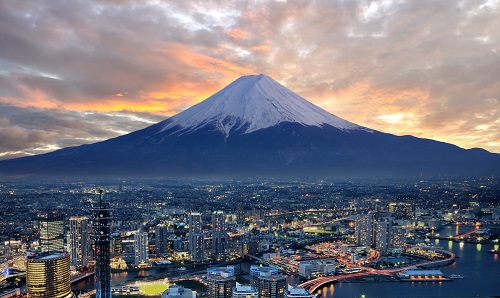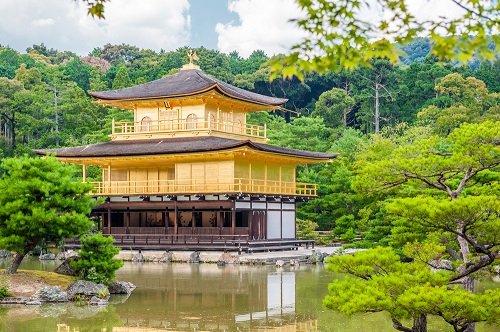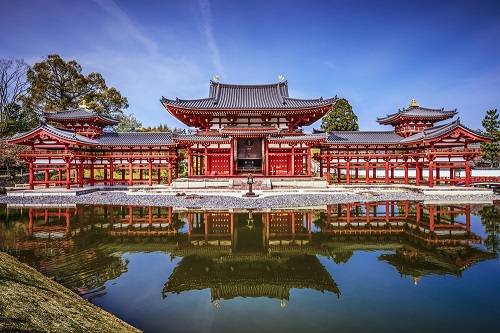If you are living and working in Japan, you should have little difficulty in accessing a wide range of alternative and complementary therapies. The country is home to many traditional therapies, from forms of herbalism to energy-centred therapies.Some examples of the complementary therapies you can find in Japan include:
• Kampo
• Acupuncture
• Moxibustion
• Massage
• Reiki
• Wakanyaku (Japanese herbal medicine)
You may be familiar with some of these already, especially if you are interested in complementary medicine, as they have become widespread in the West. For example, acupuncture and Reiki are popular aspects of many Western therapy clinics.
A report on complementary medicine in Japan showed that 73% of respondents practised some form of complementary therapy, the most common being Kampo, which 70% of the respondents claimed to do. 96% of the doctors who practised complementary medicine were Kampo practitioners. 8% of the doctors practised other forms of alternative medicine, outside of Japanese traditional practices, including:
• Chiropractic
• Aromatherapy
• Homeopathy
• Health spa therapy
• Ayurveda
• Hypnosis
• Flower therapy
• Thalassotherapy
• Herb therapy
• Qigong
• Yoga
• Dietary therapy
• Imagery
• Meditation
• Art therapy
• Prayer

Kampo (漢方医学, Kanpō igaku) is a form of traditional Japanese medicine that has been covered by the Japanese national healthcare system for decades. Over two hundred Kampo formulas, in pill or powder form, are officially registered by the Japanese Ministry of Health. It was estimated some years ago that 80% of medical doctors in Japan prescribed Kampo to patients, and also that two-thirds of officially registered formulations were covered by national health insurance. Kampo itself came to Japan in the sixth century, and continued to grow until the 18th century. It is now becoming eclipsed by traditional Chinese medicine, which is very popular in Japan, as well as by conventional Western treatments. Most Kampo ingredients are imported from China.
Wakanyaku is another form of traditional Japanese herbal medicine, and it is connected to the mystical sect of Japanese Buddhism, Shugendo. It is said to have been used by the ninja, Japan’s famous warriors.
Some sample prices are:
• Kampo herbal medicine: ¥500 to ¥600 / US$4 to US$5 (per day)
• Wakanyaku herbal medicine: ¥1000 to ¥4000 / US$9 to US$36 (per box)
• Acupuncture and moxibustion treatment: ¥8000 / US$72 ( ¥3000 discount if you show a foreign passport and a temporary visitor visa)
• Private martial arts and qigong lesson: ¥ 5000 / US$45 (1hour)
You will also find many practitioners of acupuncture (針) in Japan. Japanese acupuncture is different from its Chinese and Korean counterparts, although all forms of acupuncture have their basis in similar beliefs. Japanese acupuncturists use thinner needles and the technique is gentler, with only shallow insertions of the needles. The diagnostic assessment in this form of the practice relies on palpation of the abdomen, back, and various places along the meridian system. Japanese acupuncture is often called ‘meridian acupuncture.’ It was banned for a time, under the Meiji period, and when permitted once more was only allowed to be practised by the blind, hence the somewhat different approach.
Moxibustion (お灸, okyu), a combination of heat treatment and herbalism in which dried mugwort is burned near the surface of the skin, is also a little different in Japan to in other parts of Asia. It is known as ‘direct’ moxibustion, and is a little riskier than moxibustion carried out elsewhere, as it introduces the burning substance closer to the skin. The practice aims to warm areas of the body in order to stimulate circulation and lymphatic flow. The term itself comes from the Japanese “mogusa”, “herb”(mugwort), and the Latin “bustion”, meaning burning.
Reiki (霊気) has also become very popular in the West, but its home is in Japan: it was developed by Mikao Usui in 1922, and practitioners of reiki are now found all over the world. It is an energy technique, reliant on the laying-on of hands, in which a healing energy is said to be delivered through the practitioner to the patient. It is designed as a stress reliever, and to improve the condition of various parts of the body.
The word ‘reiki’ refers to a ‘universal life energy’, and the Usui System is a way of working with this universal energy for the healing of self and others. Usui Shiki Ryoho addresses the whole person on the physical, emotional, mental and spiritual levels. There are various forms of the practice, including Karuna reiki and Usui reiki.

In some forms of traditional complementary medicine, such as Kampo, practitioners must be qualified and licensed. Registered practitioners also include those who specialise in Judo-orthopedics: unique orthopedic techniques that have been developed by Judo practitioners.
Traditional massage is also popular in Japan, including:
• Shiatsu (指圧)
• Anma massage (按摩)
Shiatsu is rather like acupuncture, in that it uses pressure on energy points throughout the body in order to stimulate healing and restore balance. Anma massage is more medical in application. Shiatsu derives from Anma massage techniques. Both are based on the principles of Qigong, a Chinese system that resembles tai chi. It uses breath and a flowing sequence of movements to restore energy to the body.
The Japan Qigong Academy says that the idea of qi/chi has only been a part of Wu-shu or martial arts and Buddhism in Japan, and there is no existence of medical qigong historically in the country. However, Japan derives many of its complementary therapies from China, and Qigong appears to be no exception. The practice is increasing in popularity throughout Japan.
Overall, if you are an expat living in Japan, you should easily be able to find a range of complementary therapies, from massage to herbalism to energy work. You may take the opportunity to learn more about alternative methods. Be aware that some practitioners may not speak much English, and communication can be an issue, but you should find plenty of practitioners, whether you are living in an urban or a rural area.

